
Thinking of starting your own container garden but not sure where to begin? Look no further! This article is your ultimate beginner’s guide to container gardening. Whether you have a small balcony or a limited outdoor space, container gardening allows you to bring nature into your home. From choosing the right containers to selecting the perfect plants, we’ll walk you through all the essential steps to create a thriving container garden. Get ready to unleash your green thumb and transform any space into a lush oasis!
Choosing the Right Container
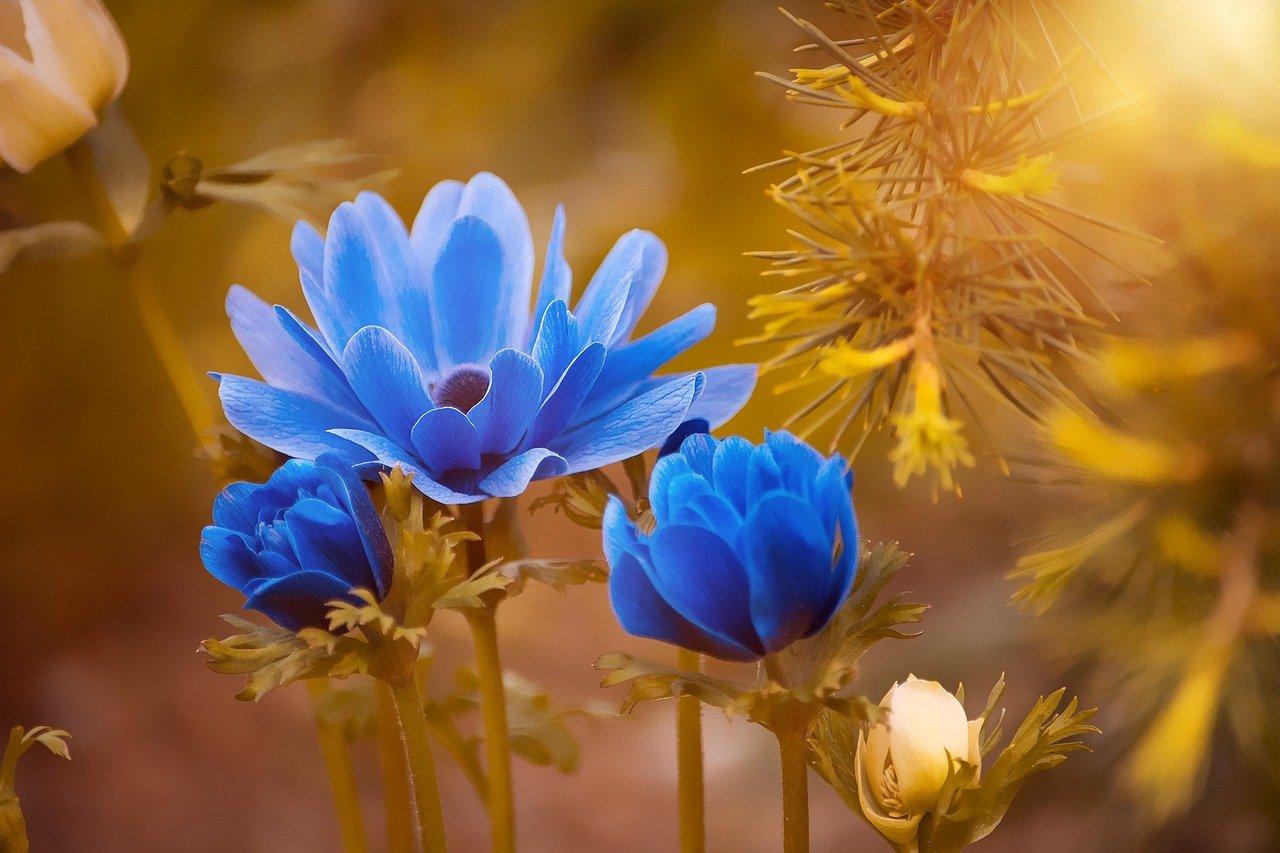
Consider the size and depth of the container
When choosing a container for your plants, it is essential to consider the size and depth of the container. The right size will provide enough room for the plants to grow and develop a healthy root system. You want to ensure the container is large enough to accommodate the plant’s final size without being too cramped. The depth of the container is also crucial as it will determine how much soil the plant can hold and how well it can retain moisture.
Look for containers with drainage holes
One of the most important aspects of a container is its ability to drain excess water. Plants need proper drainage to prevent root rot and other moisture-related problems. Look for containers with drainage holes at the bottom to allow excess water to escape. If the container you choose doesn’t have drainage holes, make sure to drill some in the bottom to ensure proper drainage.
Choose a material that suits your needs
Containers come in various materials, each with its pros and cons. Some common options include plastic, clay, ceramic, and wood. Plastic containers are lightweight, affordable, and often have built-in drainage holes. Clay and ceramic pots are aesthetically pleasing but can be heavy and may require additional drainage holes. Wooden containers have a natural look but may require regular maintenance. Choose a material that suits your needs, taking into consideration factors such as durability, weight, and aesthetic appeal.
Consider the weight and portability of the container
Container gardening offers the flexibility of moving your plants around to optimize sunlight and create a visually pleasing arrangement. Consider the weight and portability of the container when making your selection. Larger containers made from materials like clay or ceramic can be heavy and difficult to move once filled with soil and plants. Opt for lightweight options if you plan to rearrange your containers frequently or if you have limited physical strength.
Selecting the Appropriate Soil
Understand the importance of soil quality
The soil in your container plays a vital role in the overall health and growth of your plants. It serves as a primary source of nutrients, water retention, and root support. Understanding the importance of soil quality is essential to ensure the success of your container garden.
Use a well-draining soil mix
When selecting soil for your containers, choose a well-draining soil mix. This type of soil allows excess water to escape easily, preventing waterlogged roots and potential rot. You can buy a pre-made well-draining soil mix from a garden center or create your own by combining regular potting soil with perlite or vermiculite for improved drainage.
Consider adding organic matter for nutrient enrichment
To provide your container plants with essential nutrients, consider adding organic matter to your soil mix. Organic matter, such as compost or well-rotted manure, enriches the soil by improving its structure and nutrient-holding capacity. It also enhances microbial activity, benefiting the overall health of your plants.
Avoid using garden soil alone
While garden soil may be suitable for in-ground planting, it is not ideal for container gardening. Garden soil can become compacted and heavy when used in containers, leading to poor drainage and restricted root growth. It may also contain pests, diseases, or weed seeds that can harm your plants. Instead, opt for a well-draining soil mix specifically formulated for container gardening.
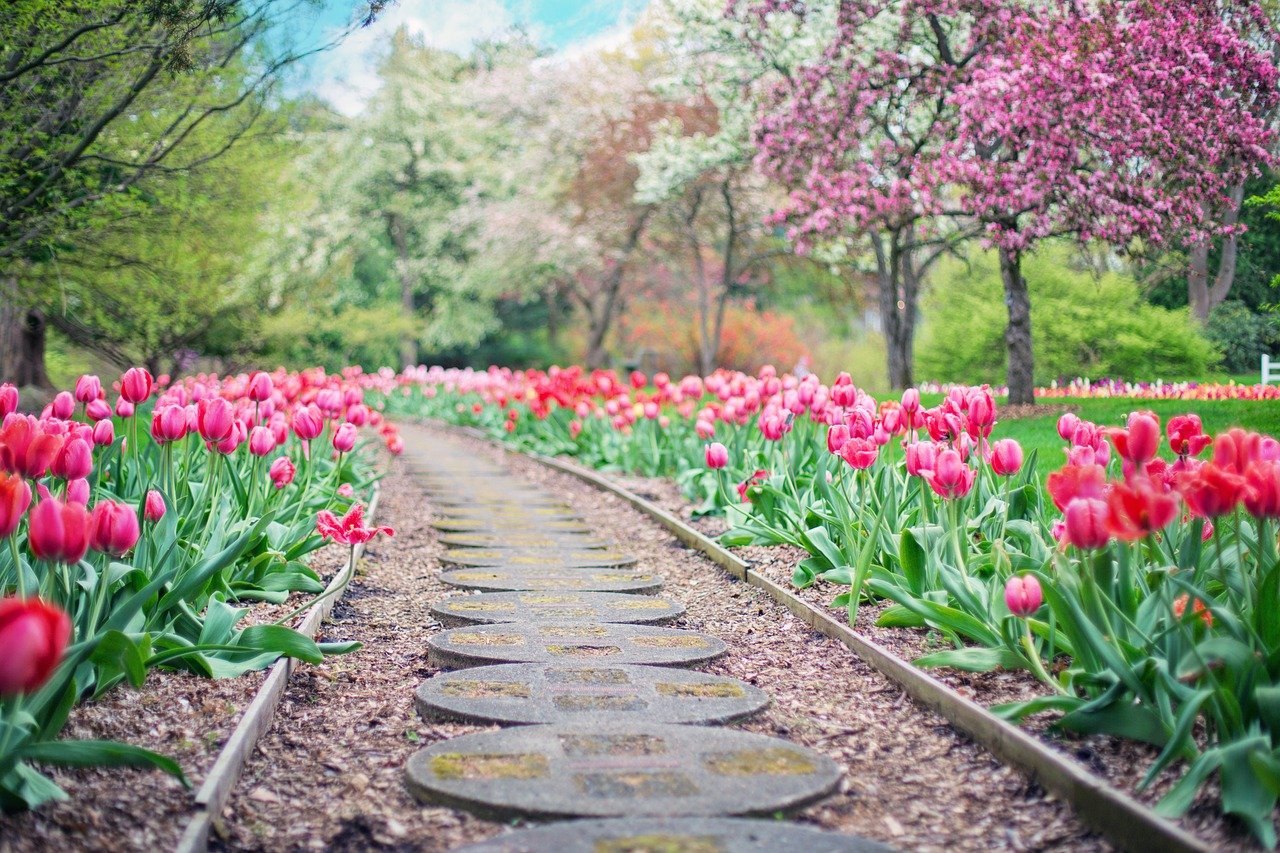
Consider pH level and soil testing
Different plants have varying pH requirements for optimal growth. Consider your plant’s specific pH preferences when selecting soil or adjust the soil pH using soil amendments. Performing a soil test can help determine the current pH level and identify any necessary adjustments. Soil test kits are readily available at garden centers and provide valuable information about your soil’s nutrient content and pH level.
Picking the Right Plants
Consider the amount of sunlight available
The amount of sunlight your container garden receives is a crucial factor in plant selection. Some plants thrive in full sun, while others prefer partial sun or shade. Evaluate the available sunlight in the area where you plan to place your containers and select plants that will thrive under those conditions.
Choose plants that suit your climate
Different plants have different climate requirements. Before selecting plants for your container garden, consider the climate in your region. Some plants are better suited for colder climates, while others thrive in tropical or arid environments. Choosing plants that are adapted to your climate will increase their chances of success and minimize the risk of plant stress or failure.
Select plants with similar water and nutrient needs
To simplify maintenance and ensure healthy growth, choose plants with similar water and nutrient needs. Grouping plants together that have similar requirements will make watering and fertilizing more efficient. This practice will help prevent under or over-watering certain plants, reduce the risk of nutrient deficiencies or excesses, and promote overall plant health.
Consider the eventual size of the plant
When selecting plants for your containers, consider the eventual size they will reach. Some plants may start small but later outgrow their containers, requiring repotting or becoming root-bound. It is important to choose plants that will fit comfortably in their containers and allow room for root development and growth.
Take into account the growth habit and suitability for containers
Different plants have varying growth habits, such as trailing, bushy, or upright. Consider the growth habit of the plants you choose, as well as their suitability for container gardening. Certain plants may have invasive root systems, aggressive growth, or special requirements that make them less suitable for containers. Choose plants that are well-suited for container gardening and will thrive in the confined space of a container.
Providing Adequate Watering
Understand the watering needs of container plants
Proper watering is crucial for the health and vitality of your container plants. Understand the watering needs of your specific plants, as different species have different water requirements. Some plants prefer consistently moist soil, while others prefer drier conditions. By knowing the specific needs of your plants, you can water them accordingly and prevent water-related issues such as root rot or dehydration.
Avoid overwatering or underwatering
Overwatering and underwatering are common mistakes in container gardening. Overwatering can lead to root rot and suffocation, while underwatering can cause drought stress and poor growth. It is important to find the right balance and provide your plants with adequate moisture without drowning them or allowing them to dry out.
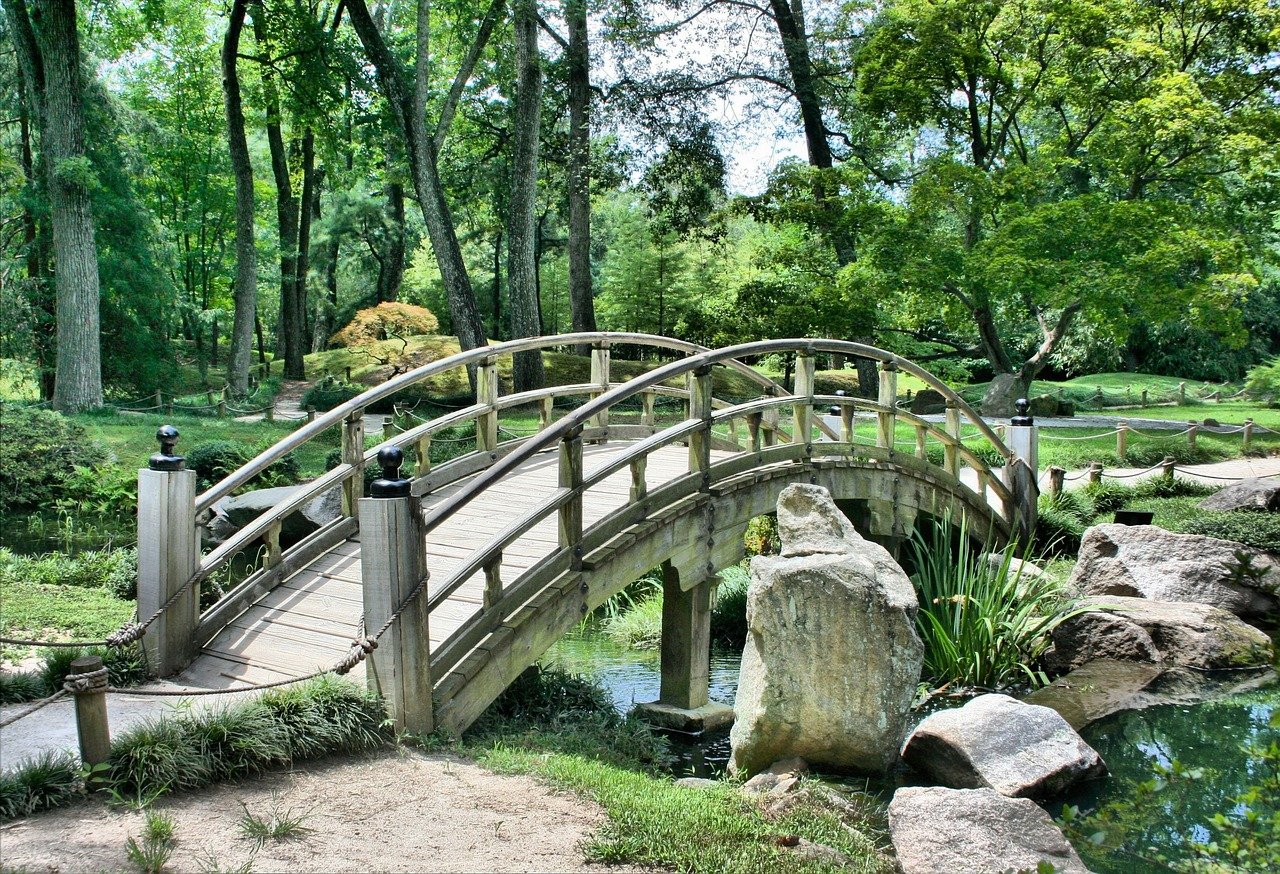
Use the right watering techniques
When watering your container garden, it is essential to use the right watering techniques. Water evenly and thoroughly, ensuring that the soil is moist throughout the entire container. Avoid watering just the surface or creating dry pockets in the soil. Consider using a watering can or a gentle hose attachment to provide a controlled and even flow of water.
Consider using self-watering containers or drip irrigation systems
If you have difficulty providing consistent and regular watering, consider using self-watering containers or drip irrigation systems. Self-watering containers have built-in water reservoirs that provide a steady supply of moisture to the plants. Drip irrigation systems can be set up to deliver water directly to the roots, preventing water waste and ensuring efficient watering.
Be cautious of water quality and potential root rot
The quality of the water you use can affect the health of your container plants. Tap water may contain chlorine or other chemicals that can harm beneficial microbes in the soil. Consider using filtered or rainwater to minimize these potential harms. Additionally, be cautious of excessive moisture and stagnant water, as it can lead to root rot. Ensure that your containers have proper drainage and allow excess water to escape.
Fertilizing Your Container Garden
Understand the importance of fertilizers
Fertilizers play a critical role in providing essential nutrients for healthy plant growth. Container plants rely heavily on fertilizers since their access to nutrients is limited compared to plants in the ground. Understanding the importance of fertilizers and their impact on your container garden is crucial for successful gardening.
Choose the right type of fertilizer
There are various types of fertilizers available, including granular, liquid, and slow-release formulas. Choose a fertilizer that suits the needs of your plants and matches the method you prefer for application. Granular fertilizers are typically sprinkled on the soil surface, while liquid fertilizers can be applied directly to the soil or mixed with water for foliar feeding. Slow-release formulas provide continuous nutrient release over time.
Follow the recommended application rates
When using fertilizers, it is important to follow the recommended application rates. Over-fertilization can lead to nutrient imbalances, burned roots, or even plant death. Read the instructions on the fertilizer packaging carefully and apply the recommended amount for your specific plants.
Consider organic alternatives
If you prefer to use natural or organic methods of fertilization, consider organic alternatives. Organic fertilizers, such as compost, manure, or seaweed extract, provide nutrients slowly and improve the overall health of the soil. They are often more sustainable and environmentally friendly options for your container garden.
Regularly monitor plant nutrient deficiencies or excesses
Even with proper fertilization, plants may still develop nutrient deficiencies or excesses. Regularly monitor your plants for signs of nutrient issues, such as yellowing leaves, stunted growth, or leaf discoloration. Adjust your fertilization routine accordingly to ensure your plants are receiving the appropriate nutrients in the right amounts.
Managing Sunlight Exposure
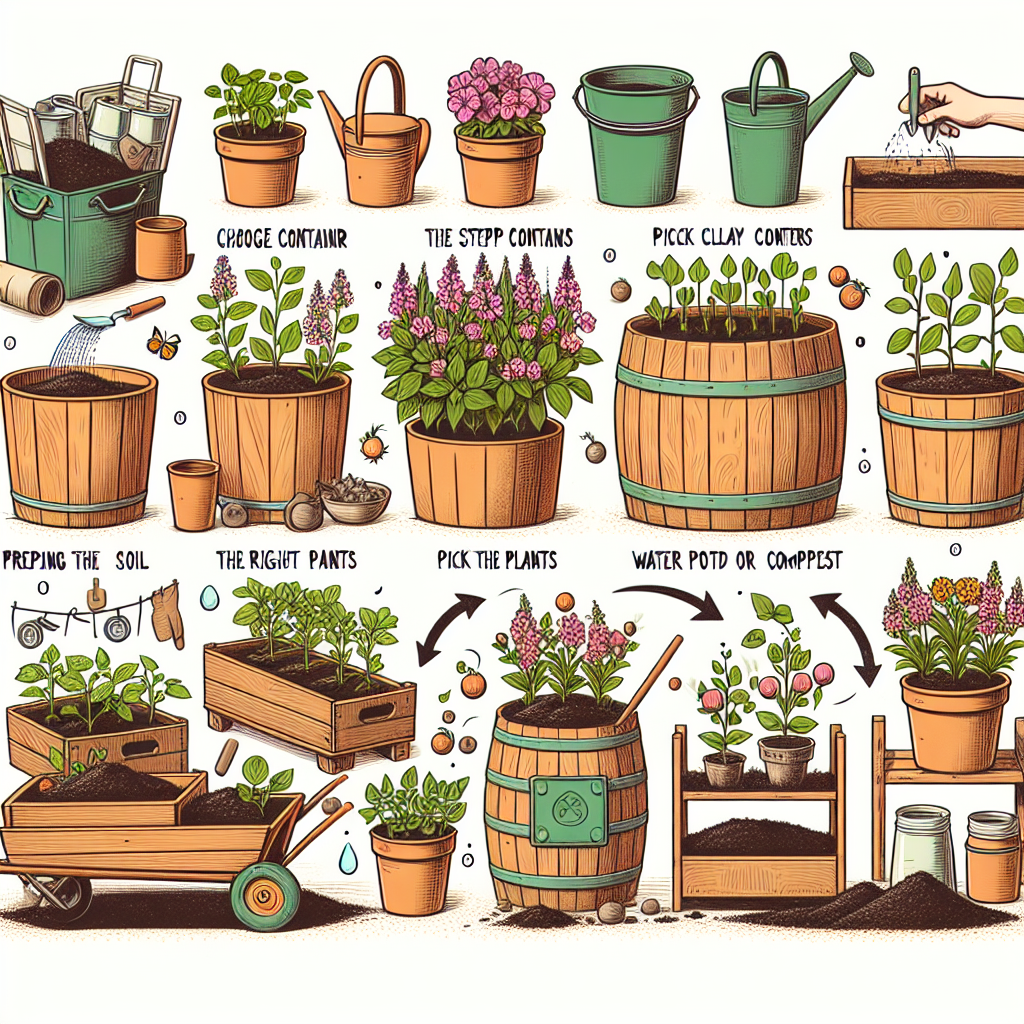
Understand the sunlight requirements of different plants
Different plants have varying sunlight requirements. Some thrive in full sunlight, while others prefer partial shade. Understanding the specific sunlight requirements of your plants is crucial for their overall health and productivity. Make sure to choose plants that match the available sunlight conditions in your garden.
Position your containers appropriately
To ensure your container plants receive adequate sunlight, position them appropriately. Place your containers in areas that receive the recommended amount of sunlight for your specific plants. Observe the sun patterns in your garden throughout the day and determine the best locations for optimal sunlight exposure.
Use shade cloth or other sun protection methods
In some cases, intense sunlight can be harmful to certain plants. If your garden receives excessive sun or if you live in a hot climate, consider using shade cloth or other sun protection methods. Shade cloth can be draped over containers to filter the sunlight and provide shade for delicate plants.
Consider rotating containers for even sunlight exposure
To promote even sunlight exposure and prevent uneven growth, consider rotating your containers periodically. This practice ensures that all sides of the plant receive an equal amount of sunlight. Rotating containers also helps prevent one side of the plant from becoming stretched or leaning towards the light source.
Avoid exposing delicate plants to intense midday sun
Delicate plants, especially those that prefer partial shade, may suffer from intense midday sun exposure. Protect these plants by placing them in areas with filtered sunlight during the hottest part of the day. This will prevent sunburn and heat stress, ensuring healthier growth.
Practicing Pest and Disease Control
Be vigilant for common garden pests
Pests can wreak havoc on your container garden, damaging leaves, flowers, and fruits. Be vigilant and keep an eye out for common garden pests, such as aphids, snails, slugs, or caterpillars. Regularly inspect your plants for signs of pest activity, and take prompt action to control their populations.
Implement preventive measures
Prevention is key when it comes to keeping pests at bay. Implement preventive measures to minimize the risk of infestations. Keep your garden clean and free of debris that can attract pests. Use physical barriers, such as netting, to protect your plants from larger pests like birds or rabbits. Regularly inspect new plants before bringing them into your garden to prevent introducing pests.
Consider organic pest control methods
If you prefer to use natural and environmentally friendly methods of pest control, consider organic alternatives. There are various organic pest control methods available, such as using beneficial insects like ladybugs or employing natural repellents like neem oil or garlic spray. These methods can effectively control pests without harming beneficial insects or pollinators.
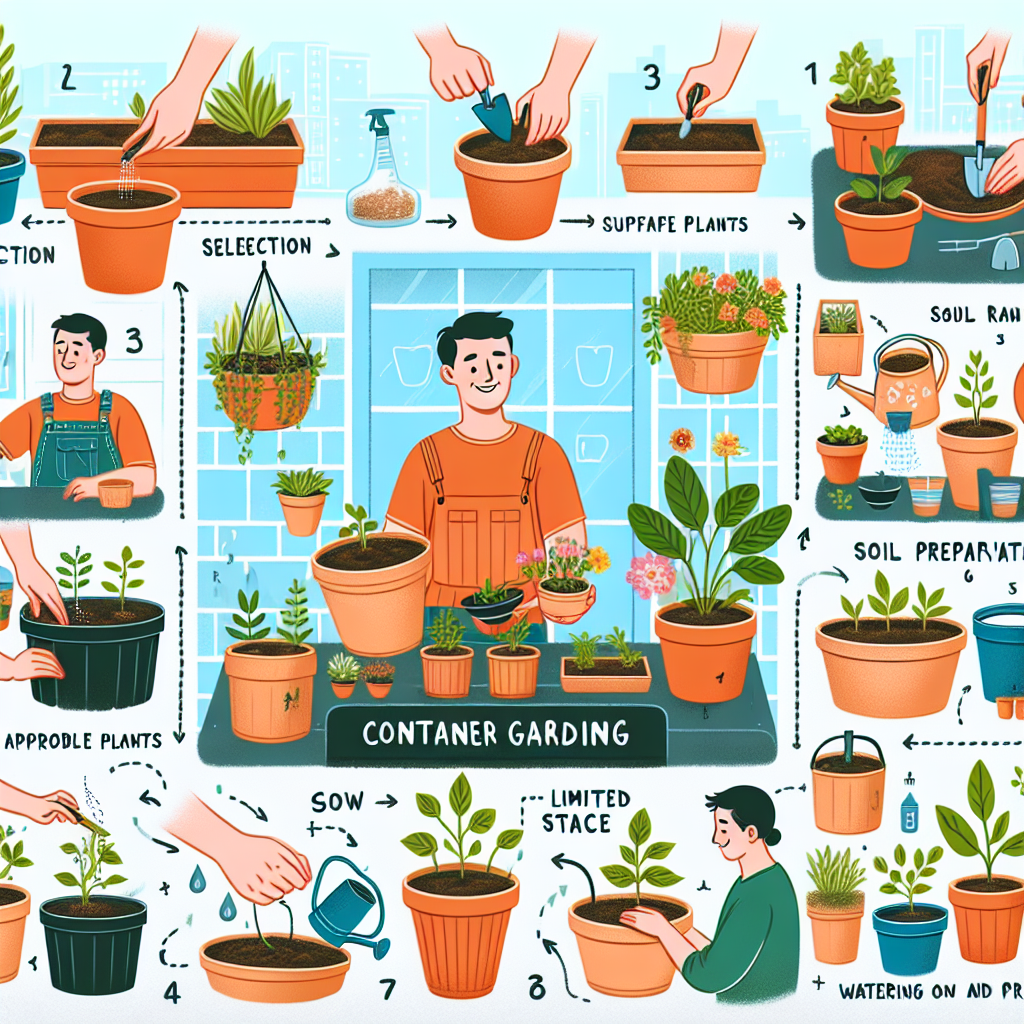
Monitor for signs of plant diseases
Like pests, plant diseases can also impact the health and productivity of your container garden. Monitor your plants for signs of diseases such as powdery mildew, leaf spot, or root rot. Early detection allows for prompt action and better chances of controlling and treating the diseases.
Act promptly to control and treat any issues
If you notice pest or disease problems in your container garden, it is important to act promptly to prevent further damage. Remove and destroy affected leaves or plants if necessary. Treat infestations or diseases using appropriate methods, such as insecticidal soaps for pests or fungicides for diseases. Follow the instructions on the product packaging carefully.
Regular Maintenance and Pruning
Regularly inspect and maintain your container garden
Regular inspections and maintenance are essential for the overall health and appearance of your container garden. Regularly inspect your plants for signs of stress, pests, or diseases. Remove any debris or dead plant material to promote a clean and tidy appearance. Address any issues promptly to prevent further damage.
Prune plants to maintain shape and promote healthy growth
Pruning is an important practice in container gardening. Regular pruning helps maintain the shape and size of your plants, stimulates healthy growth, and enhances their overall appearance. Prune dead or damaged branches, shape unruly growth, and remove any crossing or competing branches. Follow proper pruning techniques to prevent unnecessary stress or damage to your plants.
Remove spent flowers and foliage
Removing spent flowers and foliage is not only aesthetically pleasing but also beneficial for your plants. Deadheading, or removing faded flowers, encourages continuous blooming and prevents seed production. Similarly, removing yellowing or damaged foliage improves the overall appearance of your plants and helps reduce the risk of disease.
Monitor plants for signs of stress or disease
Regular monitoring of your plants is crucial to spot signs of stress or disease. Monitor for changes in leaf color, wilting, stunted growth, or other abnormal symptoms. Promptly address any issues to prevent further damage and maintain the overall health and vitality of your container garden.
Divide and repot crowded plants as needed
As your container garden matures, some plants may become crowded or outgrow their containers. When this happens, it is important to divide or repot the plants as needed. Carefully remove the root ball from the container, separate the crowded plants, and repot them into larger containers with fresh soil. This allows the plants to continue growing and prevents competition for resources.
Overwintering and Winter Care
Understand the winter hardiness of your plants
Not all plants are capable of tolerating cold winter temperatures. Understanding the winter hardiness of your plants is crucial before the onset of cold weather. Some plants are frost-tolerant and can survive low temperatures, while others are more fragile and require special protection or even indoor wintering.
Protect plants from extreme cold temperatures
Extreme cold temperatures can harm or kill container plants. To protect your plants during winter, consider bringing them indoors or placing them in a sheltered area, such as a covered porch or greenhouse. Wrapping containers with insulating materials like burlap or bubble wrap can also provide additional protection from frost.
Consider insulating containers
Insulating containers can help retain heat and protect plants during the winter months. Consider wrapping containers in insulating materials, such as foam sleeves or mulch, to provide additional protection. This will help prevent temperature fluctuations and minimize the risk of root damage due to freezing.
Reduce watering in winter but avoid complete dryness
During winter, plants require less water due to reduced growth and evaporation. Reduce watering frequency to prevent waterlogged soil, but avoid complete dryness, as plants still require some moisture. Monitor the moisture level of the soil and water sparingly when necessary.
Be cautious of frost and provide necessary protection
Frost can cause significant damage to container plants, especially those that are not cold-tolerant. Be cautious of freeze warnings and provide necessary protection when frost is expected. Move vulnerable plants indoors or cover them with frost blankets or sheets to shield them from the cold temperatures.
Harvesting and Enjoying the Fruits of Your Labor
Know when and how to harvest different crops
One of the joys of container gardening is being able to harvest fresh, homegrown produce. Knowing when and how to harvest different crops is essential for optimum taste and quality. Research the specific harvesting guidelines for each plant you grow to ensure you pick them at the right stage of ripeness and maximize their flavors.
Harvest regularly to encourage continued production
Regular harvesting is important for encouraging continued production in many plants. Regularly pick ripe fruits, vegetables, or herbs to promote the growth of new blooms and fruits. The more you harvest, the more your plants will produce, allowing you to enjoy a continuous supply of fresh, homegrown goodies.
Enjoy the flavors of freshly picked homegrown produce
One of the greatest pleasures of container gardening is the opportunity to savor the flavors of freshly picked homegrown produce. Taste the difference in the superior quality of your homegrown crops compared to store-bought alternatives. Savor the flavors, textures, and aromas that only freshly picked vegetables, fruits, and herbs can provide.
Share your bountiful container garden with others
Container gardening can often lead to an abundance of produce that exceeds your own consumption needs. Share the fruits of your labor with others, such as friends, family, or neighbors. By sharing your bountiful container garden, you not only spread joy and good eats but also inspire others to try their hand at gardening.
Reflect on your gardening journey and lessons learned
As you harvest and enjoy the fruits of your container garden, take a moment to reflect on your gardening journey and the lessons you’ve learned along the way. Consider the challenges you overcame, the successes you achieved, and the knowledge you gained. Use these reflections to inspire and improve your future container gardening endeavors.





